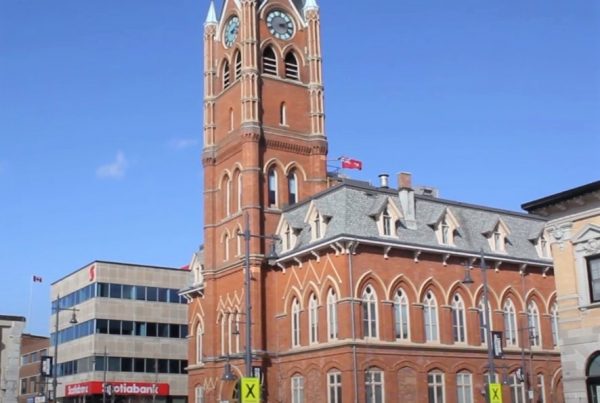There are thousands of non-emergency medical transport (NEMT) companies operating in North America. But when you work with enough of them you start to see patterns about their business models and strategies. Most of the times you can tell just by looking at their website and with a bit of abstraction you can separate them all into four different categories. These company categories can have a huge impact on size, strategy and goals. What type of company are you?
The Ambulance Transporters
These companies usually do a little EMS or they wish they did. Instead they do non-urgent patient transports in ambulances for patients that require the care and expertise of paramedics or trained EMT. The main services of these companies are Basic Life Support (BLS), Advanced Life Support (ALS) transportation, along with less intensive (and less lucrative) trips for wheelchair and ambulatory patients. Most of these BLS and ALS trips come from hospitals and clinics, which are difficult to get acess to without the right business and regulatory climate. Faculty transfers are the best paying type of trip for NEMT, usually covered by insurance allowing them to bill into the hundreds and even thousands of dollars.
These companies have high entry and operation costs. Fully stocked BLS and ALS ambulances are expensive to maintain, and trained/credentialed crews means high labor costs when these vehicles are on the road. On the software side, many of these companies insist on using computer aided dispatch systems that are designed for emergency ambulance providers. Those systems are built to solve a whole different suite of problems, like getting an ambulance to respond to a 911 call as soon as possible. What ambulance NEMT companies actually want is software that minimizes drive time and maximizes the use of their expensive vehicles and labor. Efficient routing is generally going to be more important than speed when it comes to non-emergency transports.
The Mom and Pop Shops
NEMT has been a tried and true means of achieving some sort of American Dream. There are hundreds, maybe thousands, of very small businesses, of which many are family owned. After a licenses and vehicles are obtained, these companies usually only have to ask their state/area NEMT brokers for trips and they can begin operating. The trouble with being a small NEMT provider is that you are at the mercy of brokers, for number, type and price of trips. They are also in competition with large numbers of other similarly sized providers which can result in a race to the bottom to cut trip prices to as low as possible.
The bigger problem faced by these mom and pop operators is a lack of process. These companies usually are run by owner / operators and there is rarely middle management to impose a process. For a business like NEMT where operations must run like clockwork 24/7 and mistakes can cost money, contracts and bad online reviews, a lack of a solid process is a huge risk.
Ease of initial entry, but disorganized operations, is a big reason why the failure rate in the NEMT industry is abnormally high. The best way to maintain and a grow a business is to operate efficiently in a repeatable fashion and to keep doing that in a larger and larger scale. This either requires expensive middle management or an integrated system to control the service life cycle. For small sized businesses a system is a relatively cheap way to do this.
The Franchises
McDonald’s works because they have thousands of stores around the world that all do the same thing, pump out terrible but additive food for a reassuringly familiar experience wherever you are. Some similar principles can be applied to NEMT: by taking a successful business model and applying it to other locations and replicating success. This strategy beneficial for several reasons. It is easier to add vehicles to your fleet when tapping into a new source of trips. Most companies have probably exhausted their original operating area of easy trip sources, but few companies have exhausted the entire country.
By setting up franchise locations in new areas NEMT operators can choose favorable business climates: areas with easy regulations or less abusive brokerages. They can also protect themselves by diversifying their sources of trips. Finally they can build a brand with the physical reality of having multiple locations of operations.
It can be daunting for operators to imagine running multiple versions of their business, there is a lack of control and visibility and a huge reliance on employees. Thankfully, there is a solution, technology can control and observe every step of an NEMT life cycle, from order entry to billing. It can all be done through a web based, integrated system to ensure things are done correctly. A system can record and review actions of drivers, dispatchers and other employees. If the NSA can monitor the entire world’s communications, then an owner should be able to monitor a nation wide NEMT operation. Once you have a process that works, and can be replicated, the growth will follow.
High Tech Disruptive NEMT
There are a whole new breed of NEMT operations popping up, mainly driven by the Uberisation of transportation. These companies are usually smart phone application based, using Transportation Network Companies, with contract drivers. They are going straight to large sources of trips like state medical providers and the largest brokerages. With large well connected fleets and an easily exploitable workforce of contract drivers these are poised to take a large slice of the NEMT market. Their business models are diverse and there are only a few in operation now, but they continue to grow in number. This trend has only really began in 2016 and is accelerating the scope of their operations is really only limited by the source of their trips, therefore if your state or city has let one begin to operate, they will grow like kudzu, choking out smaller less technically savvy operators. These businesses base their model on their technology and marketing to gain rarefied access to trips from large organizations and there is really only two ways to compete, fight or flight.
Conclusion
Every NEMT company is unique and their character depends on owners and employees. However, there are commonalities in all of them, and that means there are proven methods to improve their operations, regardless if they are an ambulance, mom and pop, franchise, or high tech. The bottom line is that all NEMT companies transport people according to tight, dynamic schedules and they all have expensive vehicles on the road to provide this service. This type of challenge is an ideal space for fleet management technology, either for strategic growth, building processes, maximizing efficiency or preparing for new 21st century competition. What type of medical transporter are you does your company fit any of these categories, or is it unique? Let us know in the comments.





Luke,
Thanks for sharing this overview of NEMT that shows the importance of systemization, efficient routing, choosing locations, and up-to-date technology.
I’d like to point out that none of these NEMT “types” are sustainable. With 30+ years of experience as a Business Consultant & 6+ years as a NEMT Business Owner, I’ve found the only way to achieve sustainable growth is to create & constantly innovate an integrated business system.
You can’t just systemize operations; you must also systemize management, marketing, and finance & integrate these systems to work together. This makes businesses run more smoothly, cuts costs, and prepares your people to handle any situation knowledgeably & confidently; creating exceptional experiences for clients.
Every NEMT provider should combine the benefits of each “type” & eliminate the problems… this can only be done by systems analysis & innovation. Even great technology is useless unless people know how to use it.